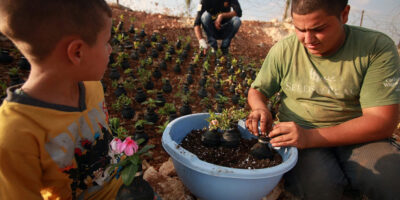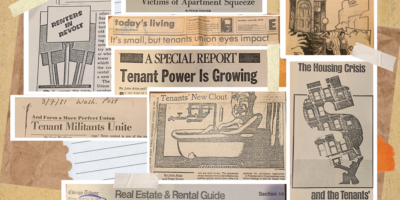Introduction
Homelessness is one of today’s most severe human rights issues and its interaction with substance misuse among mothers and their children, complicates an already terrible situation. This research paper that I am writing delves into the harsh reality experienced by this vulnerable group, focusing on the multiple issues of homelessness, especially within my community, which is aggravated by the dark side of substance misuse. The goal of this research paper is not just to illustrate a stark reality but also to add to the continuing discussion about how to best serve and empower, homeless woman and their children dealing with substance abuse. It is a call to action for legislators, social service providers and the general public to recognize and address the specific needs of these women and their children who are caught between homelessness and substance abuse. The predicament of homeless women and children is overlooked, overshadowed by larger societal challenges. However, it is a consequence of systemic failures ranging from insufficient social support systems to widespread cycles of poverty and addiction. Homelessness and substance misuse form a difficult- to -break cycle.
Detrimental Effects of Child Growth and a Mother’s ability to Properly Raise her Child
According to “Young Children Experiencing Homelessness: An Overview” by SchoolHouse Connection, the statistics are alarming and give a clear indication of the difficulties these families endure. In the United States, an estimated 1.5 million children under age of six are homeless. This figure is especially disappointing when considering the developmental consequences for children throughout these crucial years. The research emphasizes that homelessness can disrupt critical areas of development, with long-teem effects for cognitive skills, emotional well-being, and general health. (SchoolHouse Connection 2018). Studies also show that women tend to turn to substances as a coping mechanism for the trauma and stress associated with homelessness. The report by SchoolHouse connection emphasizes that substance abuse can diminish a mother’s ability to provide stable care for her children, then exacerbating the negative impacts on their development and growth. This article provides an important foundation for assessing the scope of the issue. It is not simply the numbers that are significant, but the narrative they tell. Each number represents a mother and child battling for security, and the child whose potential is jeopardized by circumstances beyond their control. It highlights the critical need for comprehensive solutions that address both homelessness and substance abuse in a coordinated manner, with a focus on the specific needs of women and children.
Cause and Result of Substance Abuse
Substance abuse is a significant component in the complex web of causes and consequences of homelessness, acting as both a prelude and a perpetrator of the societal problem. The Denver Rescue Mission’s article titled “The connection between Homelessness and Substance Abuse: How The Mission Helps” gives informative facts, and proof about how drug misuse excavates the homeless crisis. According to the article substance abuse can lead to homelessness since it’s depletes financial resources, disrupts, relationships, and impairs an individuals ability to hold jobs. On the other side, the harsh realities of homelessness can lead to a person engaging in substance misuse as a sort of self medication to cope with the trauma and stress of their living circumstances. The Denver rescue mission reports that substance abuse are far greater among the homeless population then they are in the general community. For example, it has been claimed that as many as 70% of people residing in shelters struggle with drug or alcohol abuse. (Denver Rescue Mission 2023) This figure serves as a clear illustration of how closely homelessness and drug abuse are related because of the increased nature of this relationship. Addiction can prevent people from being eligible for housing programs and support services as well as impair their ability to seek assistance and keep stable housing on a physical and mental level. Furthermore, the article states that substance addiction not only makes it difficult for homeless people to get resources, but it can also cause health concerns, legal issues and social isolation. These obstacles are exacerbated for women, particularly with children who face extra stress such as childcare, and the risk of losing custody of their children. The Denver rescue missions strategy to addressing this issue entails offering, complete assistance that includes not only housing but also drug treatment, mental health services, and life skills training.
Working Towards a Solution
The New York City homelessness issue has a particularly severe impact on single moms and their children, as graphically illustrated in Kendra Hurley’s informative piece “Cradle and Awe: With Homeless Babies and Toddlers at Record High Levels, New Ways to Help Them Emerge.”Boroughs like the Bronx and Brooklyn have experienced an increase in homeless families, with shelters reporting an inflow of women and children seeking refuge. As a result, specialized shelters and support groups have emerged in the city to meet the unique needs of these families. For example, groups in Manhattan and Queens provide not only shelter but also comprehensive support services, such as addiction recovery programs that allow moms to stay with their children while receiving treatment. Finding help can be as simple as contacting local non-profits and utilizing resources given by the Department of Homeless Services. To address the situation, a multifaceted approach is required. This includes expanding the supply of affordable housing, offering more comprehensive healthcare, such as mental health and addiction services, and establishing jobs with living salaries. Furthermore, legislative improvements focusing on preventive measures and quick rehousing efforts are needed to keep families from becoming homeless. New York City can significantly improve the lives of homeless women and their children by enhancing its support network and increasing services that address the core causes of homelessness.
Preventative Measures for Addiction and Substance Misuse
To overcome addiction and substance abuse in New York City and keep them from leading to homelessness, a comprehensive prevention approach must be established. A plan could include instructional initiatives in schools and communities that educate students about the dangers of substance abuse, early intervention programs for those at risk and expanded access to mental health treatment to address underlying issues that may lead to substance abuse. additionally, developing a strong network of recovery support services such as sober, living homes and job training for those in recovery can assist people reintegrate into society and lower their chances of relapsing. According to the New York City Department of health and mental hygiene 1,444 people died/and or ended up homeless from addiction in 2018, with the Bronx and Staten Island having the highest rates this highlights the critical need for targeted preventative initiatives in these boroughs.
How this Topic Affects Different Groups of People
The combination of addiction and homelessness, particularly among women and their children has a substantial impact on communities aggravating social inequities, and disproportionately affecting certain populations. For example, low income, families and minority groups frequently encounter, structural and impediment to healthcare and addiction treatment facilities, perpetuating cycles of poverty, and homelessness. Race and class are important factors as communities of color and economically impoverished neighborhoods may have greater incidence of substance misuse disorders as a result of stress or such as unemployment and a lack of affordable housing. Gender dynamics might influence availability and type of support services provided with women, particularly single mothers, encountering unique problems, such as the need for childcare while undergoing treatment. In addition to, LGBTQIA+ may face discrimination and healthcare and social services making it harder for them to seek assistance. This societal stigma associated with addiction and homelessness, and further isolate these individuals making it more difficult for them to re-integrate into society and pursue possibilities for upward mobility. The impact on children is especially significant instability and trauma associated with homelessness can result in long-term developmental and psychological problems perpetuating the cycle of adversity.
Why is this an Important Research Topic?
This research topic is critical, especially considering the current scenario in New York City, where homelessness and addiction coexist. Understanding the link between addiction and homelessness is critical for designing effective solutions that meet the diverse needs of those confronting both difficulties. Investigating the factors that contribute to substance abuse among the homeless, we may customize preventative and treatment methods to give focus assistance. This research is intended to shed light on the underlying issues that feed the cycle of addiction and homelessness between mothers and their children, ultimately leading to more comprehensive solutions that adjust the basic causes of the cities interconnected problems.
CITED SOURCES:
- SchoolHouse Connection. (2018). Young children experiencing homelessness: An overview. https://schoolhouseconnection.org/article/young-children-experiencing-homelessness-an-overview
- Denver Rescue Mission. (2023). The Connection Between Homelessness and Substance Abuse: How this Mission Helps https://denverrescuemission.org/homelessness-and-substance-abuse/
- Hurley, K. (2014). Cradle and all: With homeless babies and toddlers at record high levels, new ways to help them emerge. The New School Center for New York City Affairs. http://www.centernyc.org/inneedofsheltercradleandall
- Brand, D. (2022, June 30). Drug overdoses continue to rise inside New York City homeless shelters. City Limits. https://citylimits.org/2022/06/30/drug-overdoses-continue-to-rise-inside-nyc-homeless-shelters/





